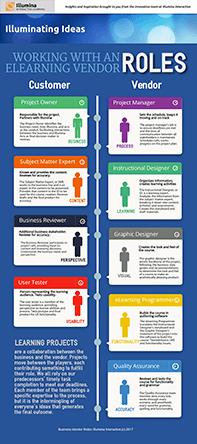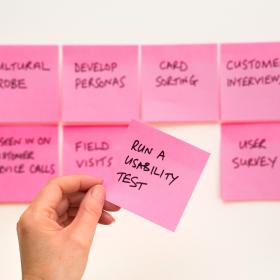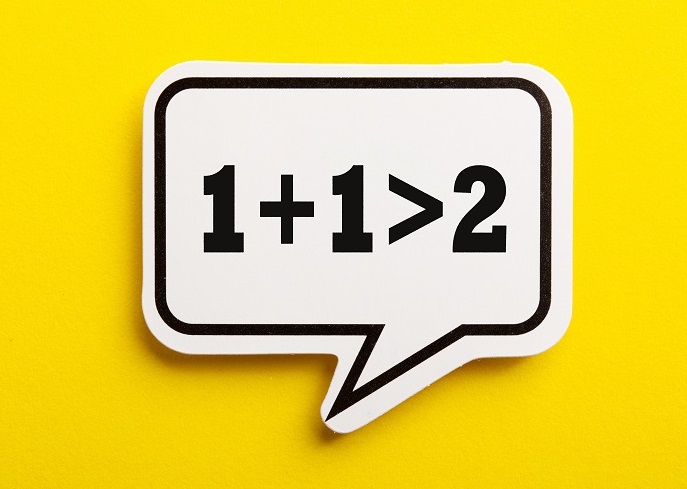Building eLearning: Behind the Scenes with eLearning Development
In our ongoing series looking behind the scenes of building eLearning, we’ve explored project management, graphic design and quality assurance. We also introduced you to the infographic of our team approach to content creation. This month, we’re going to look at eLearning development, and the work the developers do to bring our projects to life.
Our new blog editor Rachel pulled a panel of our development experts away from their computers (not an easy feat!) to get the scoop on what it takes to create a course. Jason, Carrie, Karen and Rich, who have over 30 years of combined experience in eLearning, reflect on their experiences as course developers.


Development: The Nuts and Bolts
Rachel: Hi guys. Thanks for taking the time out of your busy schedule to chat with me today.
Carrie: Sure – no problem!
Jason: A break from the salt mines is always welcome!
Karen: Happy to help.
Rich: It’s my pleasure. Thanks for asking.
Rachel: How did you learn to do this work? Did you go to school for this?
Jason: I learned by doing. My approach was primarily project-based in that I figured out what I needed to do in relation to my project goal. I did not go to school for eLearning development, though I was able to pull from past experiences in designing websites during the early days of the internet. I also started my professional career as an instructor teaching undergraduate philosophy courses. The skills developed through these two categories of experience provided a solid foundation as I began to sharpen my focus upon eLearning development.
Karen: I went to school for Interactive Design where I learned a lot of the skills that are also used and useful in eLearning. Working at Illumina exposed me to the eLearning world. I learned a lot through trial and error and doing things on my own or finding ways to solve problems with the whole team.
Rich: It really started for me when I got a certificate from the New York Institute of Photography. From there I learned photoshop and used it on personal projects for years. When I started developing eLearning, I learned Illustrator and Storyline the old fashioned way—just doing it. I’ve had the great fortune of working with some really smart people who have taught me a lot about different aspects of eLearning.
Carrie: I got my first taste of eLearning 24 years ago as an instructional designer and have been hooked ever since! I’ve since shifted my focus almost completely to the design/programming end of things, as it more closely matches my formal training in photographic technology. In that sense I’ve had some formal training, primarily in different programming languages, but mostly I’m self-taught.
Rachel: eLearning development is a very detail-focused job. Do you consider yourself to be detail-focused in general? What’s a non-work example of something that shows that?
Jason: I imagine everyone says this about their job, but when it comes to eLearning development, the devil is the details. Whether that be an out of place or missing trigger, to an extra space in a paragraph on slide 66, and all places in between. Thankfully, I do find that I am detail-focused. This predisposition was, and is, continually developed through my (never-ending) philosophical and musical studies. Discovering Heidegger’s definition of being in his great work, Being and Time, or placing the up beat in just the right place so that a tune swings are just two non-work examples that require a high level of focus upon detail.
Rich: When it comes to eLearning I like to think I’m detail-oriented—there are so many little things to watch out for. Sometimes it’s consistency over many slides or modules, and sometimes it’s about making sure a certain item is in the exact same spot on all slides. In my personal matters maybe I’m a bit less detail-oriented. But my wife has a keen eye, so it goes without saying that anything I do around the house requires attention to detail!
Karen: I am very detailed-focused and it definitely transcends into my eLearning work. I am constantly making sure the styles set forth are met as close as possible if not exactly. My OCD has been good in that regard.

Carrie: I know what you mean, Karen! I am often kidded about that! If I need a receipt from eight years ago I know exactly where to find it. Everything in my pantry is arranged according to food type and expiration dates.
Rachel: What process do you use to build a course?
Jason: I always start with obtaining a clear vision of the goal. At that point, I consider the experience that would lead towards that goal in the best possible way. I have a folder for each project where I collect and curate images, links to articles/websites, etc that seem to fit the experience I am shooting for. When I get into the weeds, I allow the content to shape particular interactions/animations/page design, always with one eye on the overall experience and goal. Speaking of the weeds, I am always looking for ways to make every part of the learning experience as authentic as possible. By, authentic, I mean, for example, that an interaction for a particular skill, is actually an interaction the learner would experience in the situation that they are learning about. I try to do as much designing and planning before jumping into the course development software. I will use One Note (notes, specifications, etc, etc), and Xd (mockups).
Karen: It depends on what I am doing on the project. If I am strictly doing design, I like to spend time looking at the client’s branding guidelines, their use of imagery, their use of colors. I also spend time looking at the popular trends in the industry and go from there. If I am doing development, I start by getting all the assets together as well as getting a good playlist together.
Carrie: I’d have to say that I’m quite methodical in my approach and I really strive to build each course as cleanly, quickly and efficiently as possible.
Rich: When the content reaches me, it’s ready for multimedia development. I have worked with storyboarding, but I have also used rapid eLearning development approaches. This has consisted of creating an overall look and feel, and then creating a few specific slide design mock-ups, getting approval, then using these to create the entire course. It can be a very efficient way to create, but it’s not for all clients.

Rachel: What is the biggest headache you face in your work?
Jason: Unclear or shifting goals are often at the root of project headaches. The best learning design comes from clear goals at the outset. Unclear goals leads to the “death by a thousand cuts” phenomena, and as such is often responsible for a great project turning into a mediocre one.
Karen: The biggest challenge can be the deadlines. At times, you can be working on multiple projects with similar deadlines, that can be very challenging. And like what Jason said, changing project goals – when a client doesn’t have a real clear sense of that they’re looking for and you need to change things 100 times…100 may be exaggerating it a bit but you get the picture.
Rich: Sometimes an authoring tool doesn’t always operate the way it should, the programming can get messed up, or it temporarily glitches in some other way. That can get really frustrating, depending on how long it takes to fix.
Carrie: I totally agree with you guys – changing requirements, glitches in the authoring tools… things like that can get real frustrating.
Rachel: What’s your favorite part of development?
Carrie: My favorite projects are those that employ the full gamut of my skill set, but of course I’m always thrilled to add new tools to my arsenal, as well! For me it’s always about the challenge: crossing over to the next level of proficiency and keeping up with the technology with the ultimate goal of producing training that is as effective as it is engaging.

Jason: I love designing! I love exercising my creative side and then seeing the end result after putting one’s blood and sweat into it. There is a wonderful satisfaction that comes at the end of a successful project that you’ve poured your creative self into.
Karen: I genuinely enjoy seeing the projects come to life. To see something come alive from a storyboard is always pretty cool.
Rich: I love to do design and layout work. But in general, I really enjoy working with the tools that create eLearning, whether it is Illustrator, Premiere, or Storyline 2. It feels a little like working with your hands, and you get to delete your mistakes much more easily (control+z, control+z).
Rachel: What advice can you share for clients and practitioners to avoid some of the common errors you contend with?
Jason: If I were to pick one bit of advice for clients it would be to remember that you came to me because of my expertise. Advice for practitioners – work out loud! Develop more and faster prototypes. The quicker you get something in front of the client, the better. Which leads me to my next bit of advice for practitioners. Work on how you take criticism. It is a crucially important part of your job. Learn how to deal with it in the moment, and how you respond to it.
Karen: Be willing to learn along with the course designers and developers. It’s a team effort. Being opened to accept you don’t know everything and trust your team to know what a course needs or doesn’t.
Rich: For clients, probably the biggest thing is at the analysis and design stages – have the content and the design concepts absolutely finalized. Once development begins, you can spend a lot of extra time and money if changes have to be made. These subsequent changes are not always avoidable, but it’s important to keep in mind up front.
Rachel: Another chapter closes in our behind the scenes of eLearning series. Thank you, development team, for the critical role you play in bringing our projects to life. Stay tuned for our next and final series exploring instructional design and our masterminds behind it!
Are your eLearning results less than what you’d like them to be? Drop us a line, or give us a call, and let’s chat about it. Let our award-winning team help you create Good eLearning. Done well.




